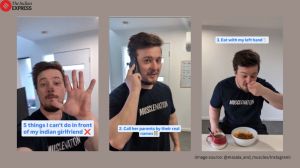Real hope in a virtual world
After suffering a devastating stroke four years ago, Susan Brown was left in a wheelchair with little hope of walking again.

After suffering a devastating stroke four years ago, Susan Brown was left in a wheelchair with little hope of walking again. Today, the 57-year-old Richmond woman has regained use of her legs, thanks in part to encouragement she says she gets from a “virtual world” where she can walk, run and even dance.
Roberto Salvatierra, long imprisoned in his home by his terror over going outdoors, has started venturing outside more. John Dawley III, who has a form of autism that makes it hard to read social cues, learned how to talk with people more easily by using his computer-generated alter ego.
Brown, Salvatierra and Dawley are just a few examples of an increasing number of sick, disabled and troubled people who say virtual worlds are helping them fight their diseases, live with their disabilities and sometimes even begin to recover. Researchers say they are only starting to appreciate the impact of this phenomenon.
“We’re at a major technical and social transition with this technology. It has very recently started to become a very big deal, and we haven’t by any means digested what the implications are,” said William Sims Bainbridge, a social scientist at the National Science Foundation.
These increasingly sophisticated online worlds enable people to create rich virtual lives through “avatars”, identities they can tailor to their desires: Old become young. Infirm become vibrant. The paralysed become agile.
They walk, run, and even fly and “teleport” around vast realms offering shopping malls, bars, homes, parks and myriad other settings. They schmooze, flirt and comfort one another using lifelike shrugs, slouches, nods and other gestures while they type instant messages or talk directly through headsets.
Because the full-color, multifaceted nature of the experience offers so much more “emotional bandwidth” than traditional websites, e-mail and discussion groups, users say the experience can feel astonishingly real. Participants develop close relationships and share intimate details even while, paradoxically, remaining anonymous. Some say they open up in ways they never would in face-to-face encounters.
“There is a fundamental irony here,” said Thomas H Murray of the Hastings Center, a medical ethics think tank in Garrison, New York. “Avatars tend to be young, beautiful, and never age or get sick. But at the same time they can serve as an important way to share information about health.”
Murray and others, however, worry that participants may neglect potentially more helpful real-life relationships, or have unrealistic expectations about what virtual worlds can do. Users and health-care providers may be rushing ahead, they say, without validating the usefulness of these worlds or identifying the dangers.
“We’ve seen the power of the Internet and what it can do,” said Albert “Skip” Rizzo, a University of Southern California psychologist who treats traumatised Iraq war veterans with virtual reality. “But as we all know there can also be negative consequences.”
The emotional punch of virtual worlds make them fertile breeding grounds for false, misleading and possibly dangerous information. Sick, lonely and psychologically fragile people are particularly vulnerable. “You have the same risks as elsewhere on the Internet,” Murray said. Still, an increasing number of major health organisations are trying to take advantage of virtual worlds for public health education, patient support and fundraising.
The Centers for Disease Control and Prevention tested a small “office” in the popular virtual world Second Life “staffed” by Hygeia Philo, an avatar named after the Greek goddess of health, and is now planning a bigger, permanent presence. The American Cancer Society has an elaborate “island” offering virtual lectures by avatar doctors, support group meetings and other activities, such as an annual fundraising marathons that last year raised more than $115,000 in real money. The March of Dimes is building a virtual neonatal intensive-care unit to warn about the dangers of pre-term births.
Medical schools and health departments have also started using virtual worlds. A University of California psychiatrist developed a virtual psych ward echoing with disembodied voices to help caregivers better understand schizophrenia. Stanford University doctors built virtual operating and emergency rooms to train young doctors. Britain’s National Health Service constructed an entire virtual hospital.
Individual practitioners, meanwhile, are discovering virtual worlds on their own. After meeting other healthcare professionals in Second Life, which with 9 million members is among the largest, Lawrence Whitehurst, a family doctor in Culpeper, Virginia, founded the Second Life Medical Association.
“I don’t diagnose, and I don’t treat. What I try to do is provide medical advice and support for people undergoing real-world medical problems,” Whitehurst said.
Some therapists have started using virtual worlds to treat patients for a host of problems, in both their real and virtual lives.
“It doesn’t work for everybody, but it works for a majority of patients,” said Brenda Wiederhold of the Virtual Reality Medical Center in San Diego, who uses the virtual world DigitalSpace to help patients overcome fear of public speaking and severe shyness.While Wiederhold said she treats only patients she has counseled in her office first, others are offering therapy to patients they have never met.
“My clients’ problems range from domestic love tangles to complex and difficult real life situations,” Elena Mangan, who counsels patients anonymously in Second Life from Britain, wrote in an e-mail.
Such anonymous counseling disturbs many therapists. Internet therapy denies counselors vital clues from subtle body language, affect and tone of voice, they say. And anonymity can carry risks.
But the biggest users of virtual worlds for health purposes so far appear to be individual patients. Dozens of support groups have been formed by and for those with cancer, paralysis, strokes, depression, cerebral palsy, cystic fibrosis, autism and other ailments.
Susan Brown, the stroke victim, said encouragement from other survivors in Dreams, one of several protected areas in Second Life for people with disabilities, and the experience of seeing herself walking again, aided her recovery. “It helped me visualise,” Brown said through her avatar, Marie Hightower, during an interview in a virtual field near a virtual home she built in Dreams. Salvatierra, the agoraphobic, Dawley, the patient with Asperger syndrome, and others tell similar stories.
For Stephanie Koslow, 48, of Poughkeepsie, New York, her virtual life is helping sustain her as she fights advanced breast cancer. “It’s not real, but it’s real in a way,” said Koslow, whose avatar is a pink fox named Artistic Fimicoloud. “I might spend an afternoon trying on silly wings and laughing with friends. And laughter heals.”
Photos



- 01
- 02
- 03
- 04
- 05




























